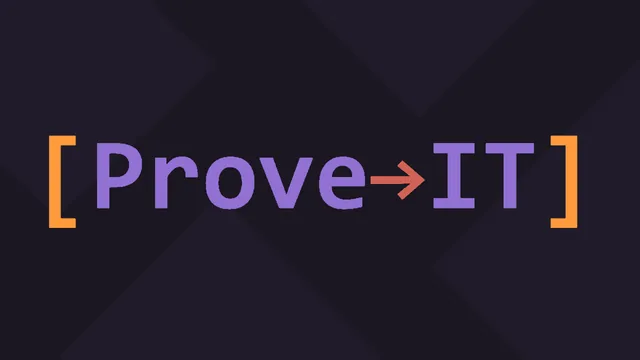ProveIT
Audience: high-schoolundergraduate
Tags: proofslogic
ProveIT is a short game which will help you learn how formal proofs work in Logic. In ProveIT you start with a set of Given Statements. Your goal is to Prove a certain new statement using Rules of Inference. As you progress you will come across new Rules and complex levels. Complete all levels to get to know the Axioms of Logic. A handy journal is included to help you understand rules if you get stuck. If you cannot play the game or you find the game is too long to judge, consider looking through the full downloadable journal to see what rules are introduced in the game. The game works only on PC (using a mouse is recommended but not required), and no downloads are required.
Analytics
Comments
Doesn’t have mobile support.
I love how hands on this is. Each of the levels teaches the concept clearly. Excellent as is. If you are looking for improvements making the method for deleting lines as a hint in the first assert level would be nice. And making it work with a touch screen would be nice.
Excellent game! Would love to see this extended to first-order logic.
- When the AND operation is dragged into the dashboard, the green guideline box should automatically skip to the next step.
- Where is the delete button for connections:)
This is super fun, I want to play this more over the next few weeks. Thanks for making it!
This was a very impressive entry which must have taken a lot of work. The game was fun to play around with and I enjoyed it, however I became quite frustrated when I could not solve a level and was not able to complete the game. I could not solve level 19 no matter what I tried, so some extra clues would be great.
I was just not able to understand how assumptions worked with propositions, and I think the issue was that things were too abstract for me.
It would also be great to be able to scroll in the levels menu to see how many levels are remaining, or to just go back to old levels easier. It is also a bit glitchy when sometime you cannot delete a node completely.
In general though this is a good entry but I think would need someone sitting next to you while you played to help when you are stuck!
Doesn’t have mobile support.
I really like the idea of this but I’m not sure it fully delivers. You introduce the rules but for most of them you don’t really explain why it works just that it works. Most of the proofs felt like you could just stumble your way through until you got the solution so I’m not sure how much understanding someone who wasn’t already familiar with formal logic would gain. I feel like it could be really good but I can’t quite put my finger on exactly what the missing ingredient is, for me.
I loved the game! It’s a lot of fun to play, and I’m learning so much.
Fun and interactive. Good for middle-school or high-school
Good points for novelty and the interactability, which will help get a feel for the propositional statements.
The only suggestions I give will be around the presentation,
-
The green popup text explaining the rules requires too much clicking in the start that may turn off learners, so we can make the text smaller and show more of it at once or just have it all in the sidebar for a single stage so no clicks required.
-
The statement and symbols should be represented a little larger, cause they are lost in between the boxes and dragging the lines.
Cool game, kinda reminds me of the nandgame.com . But I’m not sure it helps people understand how proofs actually work, even though it is fun. Probably more aimed at high-schoolers than undergrads.
Very fun game - it would be nice if the click+drag was slightly easier to use. Also some way for confident users to skip into harder levels. I think the education value may be limited by the fact that on harder levels, the bottleneck becomes having to arrange the blocks, rather than the users ability to think about the logic itself.
